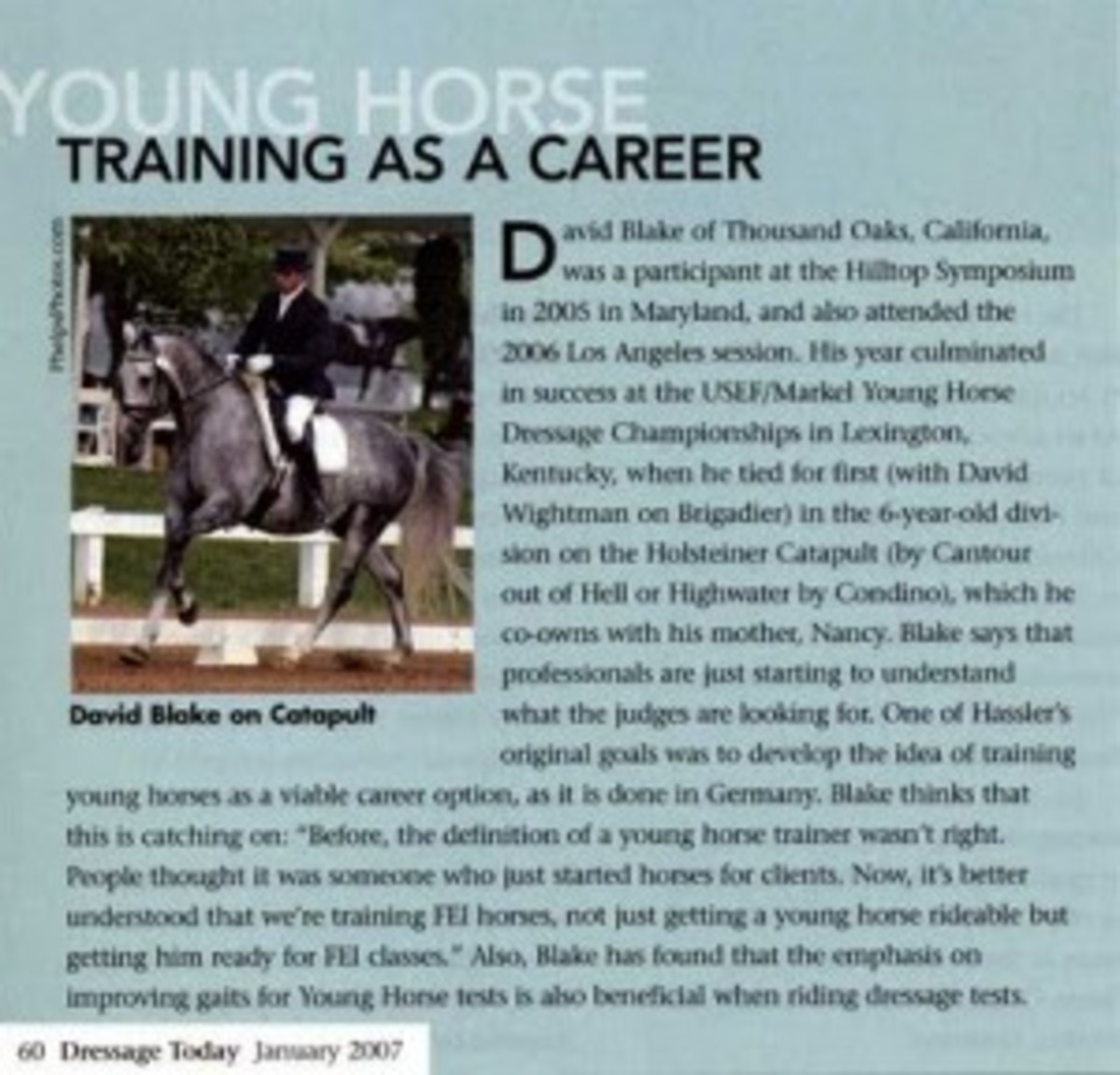I was fishing through my old Dressage Today magazines and came upon a January 2007 article titled “Young Horse Training As A Career”.
Before I begin, let me just say: We have come a long way, baby!
OK. So what I was going to say is that in the final sentence, it reads:
“Also, Blake has found that the emphasis on improving gaits for Young Horse tests is also beneficial when riding dressage tests.”
Yes!

This is something I have heard a lot from young horse trainers. When done properly, focusing on the “big picture” for the Young Horse tests allows the rider to focus on the quality of the gaits over the individual movements… which anyone who rides the old(?) horse tests, knows that sometimes we are pressured by the individual movements in a test. However, focusing on the gaits first and then improving the movements will build a quality horse – that is what Blake was saying in this article about the Young Horse tests. I will take it one step further and argue that it is essential to all horses and we need to train every horse with the same quality – by working to maintain/improve the quality of the gaits as we move on to individual movements.
In fact, just the other day I was talking with a client about how I have a more advanced horse that is starting to want to back off in the canter, after his forward warmup and as he collects more and/or does smaller circles.
Today, I plan to lunge him in side reins and focus on driving him into the contact from behind. I hope that, as I carefully monitor from the ground, I can bring him in on smaller circles and keep him jumping behind. Although it is possible to do this in the saddle, lungeing allows me to watch every second of his stride and affect it just as quickly. Because this is an important problem (4-beat canter) to avoid, I cannot risk feeling it from the saddle on the days that I don’t have a second set of eyes on the ground.
For the next couple of weeks I may have to do this a few days a week, for short sets, and then plan to get on and school him after the lunge. The goals is to have him working at 100% in the canter on a routine that builds his confidence and strength while he reconfirms a solid 3-beat canter. I also plan to do some forward canter under saddle and a nice gallop outside just as much. For now, the best thing to improve his movements is to improve the quality of the canter. As a result, the movements will improve (without evening working them!).











